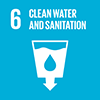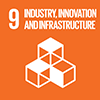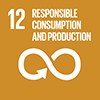Description/achievement of initiative
EcoaTEX uses the power of nature to develop sustainable materials for the textile and apparel industry. We combine creativity, design, and science to mitigate the misuse and overconsumption of water, energy, and chemicals used in textile dyeing. Using sustainable materials, nanotechnology, and "green" chemistry, we have created a patented technology of recycled waste products to be used in textile dyeing, functional coating, and finishing processes that can be deposited on the surface of natural and synthetic single fibers, yarns, and fabrics. Our goal is to promote sustainable manufacturing and ensure a healthy environment and well-being for all.
Implementation methodologies
Traditional textile dyeing and finishing, require an enormous amount of water and produce large volumes of wastewater, and currently, no cost effective process capable of thoroughly eliminating the toxic effects of dyes and chemicals discharged into the environment has been reported. Conventional dyed and finished textiles are also often made with petrochemicals and toxic materials that are unhealthy when worn against the skin. Environmental and health concerns related to the harmful effect of chemicals in textiles, wastewater, and massive consumption of water in the textile industry provide reasons for ongoing interest in the development of cleaner production methods. The initial target of the technology is sustainability-focused textile companies and apparel brands. We can help them reduce their environmental impact and save significant amounts of water and energy. \\\\\\\\r\\\\\\\\n \\\\\\\\r\\\\\\\\nNanocellulose-based dyeing and finishing technology is environmentally friendly and has the proven capability to eliminate the toxic chemicals in the textile dyeing and finishing processes and uses one-tenth of water compared to the traditional methods. With only a fraction of the water and alkali, nanocellulose-based dyeing achieved comparable dyeing and colorfastness performance compared to the conventional dyeing methods. This unique method reduces time- and energy-consuming steps involved with the traditional dyeing and provides an environmentally friendly dyeing process by eliminating any reducing agent and alkali. We also produce nanocellulose hydrogels from two cellulosic waste materials, kraft pulp from woody materials used in paper production and cotton noil from cotton plants that would otherwise be discarded.
Arrangements for Capacity-Building and Technology Transfer
We have identified and plan to collaborate with textile and chemical manufacturers and apparel brands. Our potential partner(s) will help us with the large-scale production while we continue working on the research and development as well as testing and the quality control of our products. Our product falls into the dyeing and finishing category within the supply chain. We are looking into bringing our products to market in collaboration with other textile manufacturers and our mill partner(s). The product starts with our patented and proprietary nanocellulose materials, which will be used to dye and coat yarn or fabric to be made into a finished product. The finished textiles are sold to the brand/ manufacturer and then merchandised for retail. Our channel to market will involve identifying and traveling to mill partners and trade shows, as well as market research.
Coordination mechanisms/governance structure
In our technology, modified nanocellulose hydrogels bearing dye molecules or finishing agents are coated and anchored on the surface of textiles. Due to their nano-dimension, the specific surface area of nanocellulose fibers is substantially large, which allows for the larger loading capability, particularly of the dye and functional molecules. A conventional dyeing method utilizes an exhaustion dyebath with a copious amount of dye solution, whereas nanocellulose-based dyeing applies the mixture of the nanocellulose–dye/functional molecules as a viscous slurry on the surface of a textile by printing, which is a commonly practiced method in pigment printing in the textile industries. Traditional dyeing with indigo also requires several dips in reduced vat followed by oxidation to develop darker shades. With our technology, the desired percentage shade can be acquired by adding indigo particles into the nanocellulose gel, making it a one-step process.
Partner(s)
UGA Innovation Gateway, Georgia Research Alliance




 December/ 2023
December/ 2023
 December/ 2024
December/ 2024
 December/ 2028
December/ 2028
 December/2024
December/2024
 Time-frame: February 2020 - December 2028
Time-frame: February 2020 - December 2028